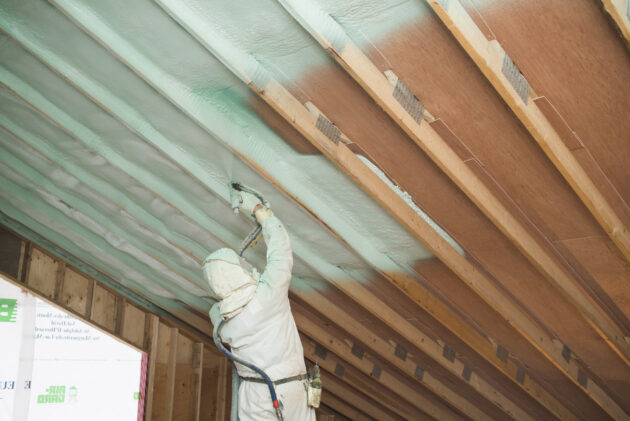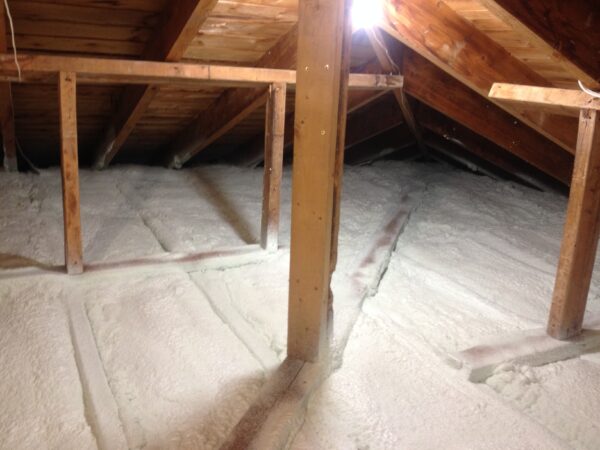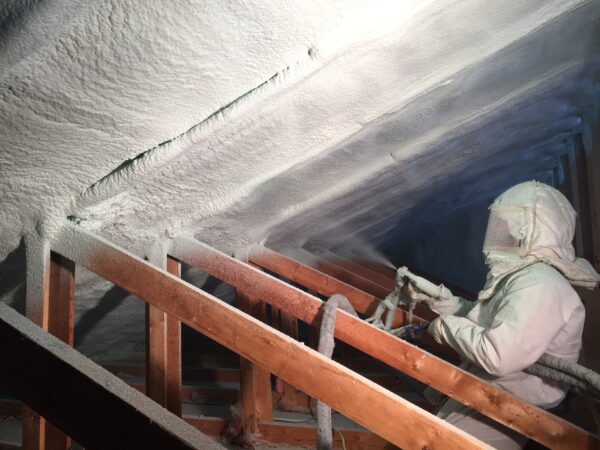Photo courtesy of Clever Samurai.
One aspect that is often overlooked in our discussions on climate change and extreme weather threats is its impact on residential home roofing systems. With fluctuating weather patterns and instances of extreme weather conditions, homeowners are increasingly concerned about the longevity and durability of their roofs. Builders and contractors need to consider the ways climate change is affecting residential roofs and implement measures to mitigate these challenges.
According to Environment and Climate Change Canada, Canada’s average temperature has been rising, with some regions experiencing increases higher than the global average. The country’s average temperature has risen by about 1.7 degrees Celsius since 1948, which is nearly double the global mean increase. This seemingly small temperature increase has significant implications for roofing materials, especially as asphalt shingles, which can deteriorate faster in higher temperatures. Aggressive tornados, hailstorms and heavy snowfalls also pose direct threat to roofing materials. Standard asphalt shingles or wooden tiles may not withstand the impact of hailstones or string wind uplift. Therefore, there’s a growing demand for roofing materials that are more durable and resilient, such as metal roofing or advanced polymers that can endure high wind speeds and extreme temperature variations.
What about what’s underneath the roof?
The demand for effective insulation solutions, particularly in home roof systems, is on the rise. While the primary function of insulation is to maintain a stable indoor temperature by reducing heat flow, the changing climate introduces new challenges and considerations in the field of insulation technology. On the flip side, colder climates may experience more frequent and severe freeze-thaw cycles, which can result in the expansion and contraction of materials which leads to cracks and water leaks. Consequently, roofing systems must be designed with materials that can withstand a wider range of temperatures. Known for its thermal resistance and water-resistant capabilities, spray foam is increasingly viewed as a solution that can withstand various challenges posed by climate change.
Increased temperature
One of the most obvious manifestations of climate change is the increase in global temperatures. Spray foam insulation is highly effective in maintaining indoor temperatures, providing a thermal barrier that can be especially crucial in colder Canadian climates. Spray foam insulation offers a high R-value, a measure of thermal resistance, making it a top contender for energy-efficient building. In the face of rising global temperatures and the increasing need for air conditioning, a roof with high performing thermal insulation can significantly reduce energy consumption. By forming a seamless layer, spray foam insulation effectively minimizes thermal bridging, helping maintain a stable internal temperature regardless of external weather conditions. It also provides a perfect seal for a complete air barrier assembly, removing potential air infiltration and heat loss. This contributes to both the lowering of energy costs and a reduction in the building’s overall carbon footprint.
Extreme weather events
Climate change has been linked to an increase in the frequency and severity of extreme weather events such as tornados and storms. Such events pose a direct threat to the structural integrity of residential roofs. High winds can rip off roofing materials or cause debris to impact the roof, leading to immediate damage. Heavy rainfall can also result in pooling of water, which may lead to leaks and structural damage over time. Statistics Canada reports that the economic costs of weather-related disasters have been rising, hitting an estimated $1.9 billion in 2018. While this figure encompasses all types of infrastructure, residential homes often bear the brunt of extreme weather events like windstorms and flooding. It is estimated that wind damage accounts for nearly 25 per cent of all homeowner property losses. This statistic directly implicates the roofing industry, necessitating stronger, more resilient materials to withstand extreme conditions.
While spray foam itself is quite resilient, its effectiveness relies on the durability of the covering materials used in roofing systems. If these covering materials are damaged, the insulation underneath may be exposed to the elements, potentially compromising its effectiveness. However, spray foam applications in unvented roof assemblies or cathedral roofs have demonstrated considerable resilience to these conditions. The material’s adhesive properties enable a strong bond with the existing roof substrate, enhancing wind resistance and structural strength. In unvented roof assemblies, it also increases the wind uplift resistance. Its flexibility allows it to expand and contract with fluctuating temperatures, reducing the likelihood of cracks and damage from freeze-thaw cycles.

Photo courtesy of Clever Samurai.
Snow, precipitation and hail
The unpredictability of weather conditions due to climate change is also leading to increased instances of hail and snow. Hail can cause immediate, visible damage to roofs, including dents and punctures. Snow accumulation, on the other hand, adds weight to the roof structure, posing a risk of collapse in extreme cases. Additionally, the cycle of snow melting and refreezing can lead to ice dams, which can result in leaks and water damage.
Canada’s Changing Climate Report (CCCR) notes an increase in precipitation across the country, particularly in winter. This uptick in precipitation contributes to more considerable snow loads on roofs, raising concerns about structural integrity. For instance, Building Codes in Ontario require roofs to withstand a snow load of 1.4 kPa (approximately 29 pounds per square foot), but instances of roof failures due to snow accumulation have been reported, pointing to the need for revised guidelines.
Hail-related insurance claims have surged in recent years. The Insurance Bureau of Canada (IBC) notes that insured damage from severe weather events across Canada reached $2.4 billion in 2020, with hail accounting for a significant portion. Regions like Alberta are particularly affected, where the number of hail incidents has been increasing over the past decade.
The primary reason behind the formation of snow dams is the uneven melting of snow on the roof. Typically, higher temperatures at the peak of the roof cause snow to melt and flow downwards, where it encounters colder zones near the roof’s edge and refreezes. Spray foam insulation maintains a more consistent thermal profile across the roofing system, effectively reducing the temperature differentials and heat loss that bring on uneven melting and, consequently, snow and ice dams.
Changes in Humidity Levels
Increased humidity levels can cause wooden roof structures to rot, weakening the overall roof integrity. High humidity can also lead to the growth of mold and mildew, which not only affects the roof but can also have implications for indoor air quality.
The escalating levels of precipitation, another consequence of climate change, raise concerns for various insulation materials, including spray foam. When water infiltrates a roofing system, it can compromise the insulation’s ability to maintain thermal performance, leading to reduced energy efficiency and potential damage. However, closed-cell spray foam is less susceptible to moisture infiltration compared to other types of insulation, which can be advantageous in a changing climate.
Water intrusion stands as one of the most damaging and costly concerns for any roofing system. On the positive side spray foam insulation offers a seamless, monolithic surface that leaves no joints or seams where water can infiltrate.
Spray foam insulation can be part of the solution to climate change challenges in the construction sector. Its high R-value (measure of thermal resistance) makes it an excellent choice for enhancing a home’s energy efficiency, thus reducing the carbon footprint. Furthermore, new formulations of spray foam are becoming more environmentally friendly, using blowing agents with lower Global Warming Potential (GWP).

Photo courtesy of Clever Samurai.
Roofing systems that benefit from spray foam insulation
Traditional pitched roof systems
In traditional pitched or sloped roofs, spray foam is often used to insulate the attic or loft space. The foam can be sprayed directly onto the underside of the roof sheathing or the attic floor, sealing any gaps, cracks, or other openings that may allow for heat transfer or air leakage. This is particularly effective in older homes where traditional insulation materials like fiberglass may have settled or deteriorated over time, compromising their efficiency.
Flat roof systems
Flat roofs are particularly well-suited for the use of spray foam. Due to its ability to adhere to a variety of surfaces and expand into a rigid form, spray foam can act as both an insulator and an air barrier. It can be sprayed directly onto the roof deck, filling in cracks and seams, and forming a seamless layer that improves both thermal and vapour barrier performance.
Metal roof systems
Metal roofs, often used in industrial or commercial settings but also found in residential structures, can benefit greatly from spray foam insulation. Metal is a good conductor of heat, therefore, metal roofs can significantly benefit from the high R-values provided by spray foam. The foam can be applied either on the interior side of the metal roof, offering an additional layer of insulation and reducing thermal bridging.
Cathedral and vaulted ceilings
Homes with cathedral or vaulted ceilings pose a unique insulation challenge due to limited space for traditional insulation materials and ventilation. Spray foam is often used in these situations because it can be used in unvented roof assemblies and it expands to fill the available space, providing effective insulation without compromising the architectural integrity of these special ceiling types.
Retrofitting and renovations
Spray foam is increasingly popular in retrofitting older homes that may lack adequate insulation. During renovations, it can be easier to apply spray foam than to fit traditional batt or roll insulation into existing spaces. Its ability to expand and fill gaps makes it particularly useful for improving the insulation in older or irregularly shaped roof systems.
Green and sustainable roof systems
With an increased focus on sustainability, spray foam is often integrated into green and sustainable roofing systems. Some spray foam products are formulated with renewable materials or use blowing agents that have a lower global warming potential. When used in conjunction with cool roofing technologies or vegetative layers, spray foam can contribute to a more energy-efficient and sustainable home.
Climate change has led to stricter building codes and regulations, especially concerning energy efficiency and carbon emissions. For instance, some jurisdictions now mandate higher R-values for insulation in new buildings or major renovations. These changing norms and regulatory influence are forcing manufacturers and construction firms to reconsider the type of insulation materials they use in home roof systems.
Spray foam insulation offers a wide range of applications in home roofing systems, from traditional pitched roofs to modern, sustainable designs. Its versatility, high thermal resistance and air sealing capabilities make it a valuable addition to many types of roofing systems, improving both their efficiency and durability. While the application methods may vary, the end goal remains the same: to create a thermally efficient and air-tight space that not only improves the comfort of the home but also contributes to energy savings.

Photo courtesy of Clever Samurai.
Maxime Duzyk is the global director of building science and engineering with Huntsman Building Solutions. He holds a background in architecture and has been in the spray foam insulation business for the last 13 years. Duzyk is involved with different building envelope committees and associations in North America like CSC, SFC, SPFA, CCMC and ULC Standards.


